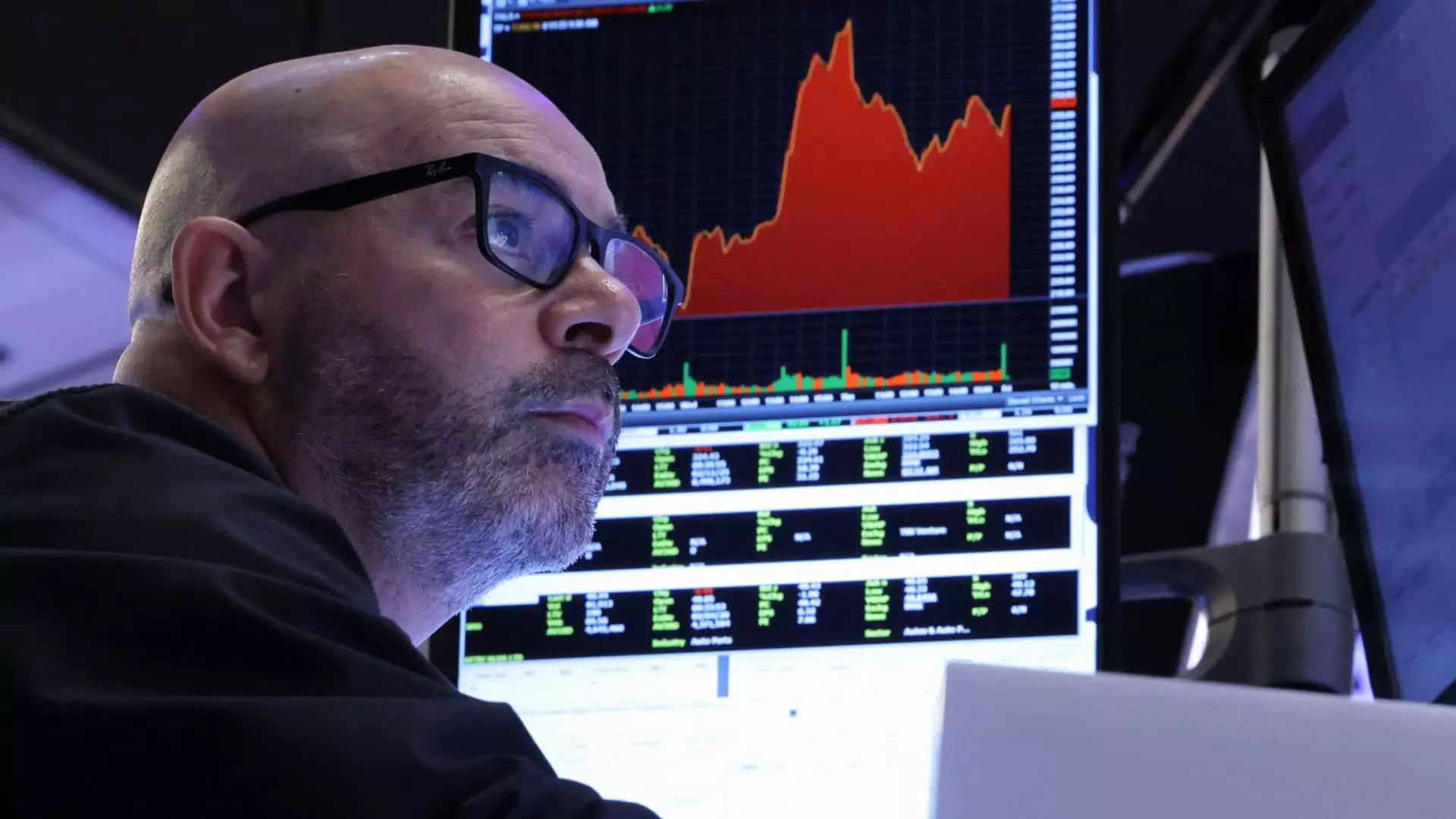In the landscape of contemporary finance, few phenomena have engendered as much anxiety—or allure—as zero-day-to-expiration (0DTE) options. Designed for those who wish to capitalize on short-term market movements, these financial instruments are becoming a national obsession. Their meteoric rise in popularity, especially among retail investors, is turning the stock market into a theater of unpredictability. In just a few months, trading volumes for 0DTE options tied to the S&P 500 skyrocketed to 8.5 million—a staggering increase of 23% from the start of the year, according to data from JPMorgan. However, this insatiable quest for quick profits may well be the catalyst for an unprecedented level of market volatility.
What makes 0DTE options so tantalizing? The answer lies in their simplicity and accessibility. With platforms like Robinhood making options trading available to practically anyone with a smartphone, individuals are drawn into the fray without a full understanding of the risks involved. The temptation to turn a small investment into a significant return is undeniably attractive, but this financial gambling is causing havoc. Investors appear to be caught in a whirlwind; the potential for rapid gains easily blinds them to the underlying dangers.
Amplifying the Market’s Rollercoaster Ride
It’s essential to recognize how the mechanics of 0DTE options contribute to market fluctuations. With traders clamoring to position themselves, often thrice over during a single trading day, the market becomes increasingly erratic. “You’re seeing the zero data options market amplify and exaggerate almost up or down,” stated Jeff Kilburg, CEO and CIO of KKM Financial. What was once a stable marketplace is now being likened to “gasoline on a fire,” a perfect analogy as the slightest shift in investor sentiment can send the entire operated ecosystem reeling.
Recent events exemplify this theory. For instance, the S&P 500 recorded its third-largest single-day gain in recent history soon after suffering significant declines. Such volatility ideally poses a warning sign to cautious investors, yet the relentless nature of the market intrigues them even more. The high stakes involved not only draw seasoned players but also invite the frenetic energy of the inexperienced.
The Historical Context
Comparing today’s market climate with that of previous decades paints a stark picture. Twenty years ago, we lacked the sophisticated arsenal of trading options designed for minutiae, such as the day-to-day changes in attitudes and news. Now, however, no event is too small to provoke swift action. With rising tensions internationally and considerable political upheaval, including tumultuous policies and reactions from key figures, investors find themselves straddling the line between panic and opportunity.
The consequences of this day trading behavior disturb the very fabric of market stability—a reality that should not be dismissed lightly. When volatility spikes, as seen recently, we begin to flirt with the specter of financial crises past. In the depths of the 2008 financial meltdown, intraday volatility measurements hit alarming levels that echo what we see today. It’s hardly a forecast of prosperity but rather a cautionary tale of what happens when speculative behavior takes precedence over strategic investment philosophy.
The Institutional and Retail Divide
It’s not just individual investors playing this perilous game; institutional traders are also drawn into the chaotic mix, using these short-lived options to hedge against their own bets. As Maxwell Grinacoff from UBS notes, the 0DTE and slightly longer alternatives have become instrumental in driving highs and lows. However, unlike retail investors, institutional players often have the resources to withstand potential losses, making their participation more of a calculated risk compared to amateur impulses.
Allegedly sophisticated financial analysts warn that while the surge in casual traders may be benefiting their bottom line temporarily, the broader implications for the market are ominous. Much like a child with a loaded weapon, there is a recklessness in this activity that could spell disaster. With far less experience in navigating the turbulent waters of the financial world, untrained investors are not only risking their capital but also contributing to the lift in market volatility.
Transacting in 0DTE options may yield immediate gratification for some, but the long-term consequences could be far more grave. The consequences of this trend are not just a matter of profit and loss; they may dictate the future of how we perceive and engage with the markets.

